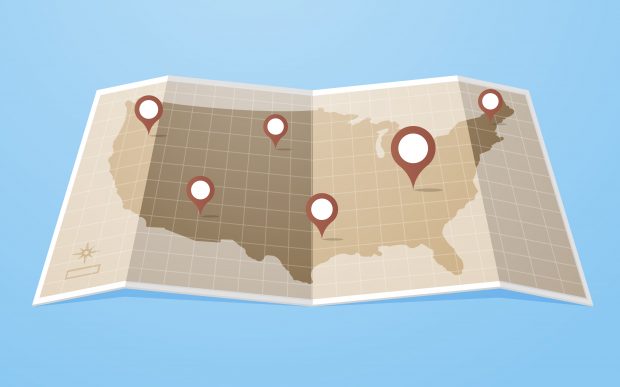 U.S. map (Image: Shutterstock).
U.S. map (Image: Shutterstock).
Membership and loan growth surged last year in the Midwest, while sagging in the Mid-Atlantic, according to a report released Friday by NAFCU.
The Midwest and the Mid-Atlantic bracketed three key trends measuring growth for members, shares and loans for the 12 months of 2018, compared with 2017's values:
- Membership grew about 5.5% in the Midwest, and only 2% in the Mid-Atlantic.
- Share growth was about 7% in the Midwest, and under 4% in the Mid-Atlantic.
- Loan portfolio growth was about 11.5% in the Midwest, but just over 6% in the Mid-Atlantic.
Return on average assets (ROA) was relatively consistent, ranging from about 0.8% for the Northeast to just over 1% for the West. ROA rose in 2018 because of an increase in net interest margins, and despite declining fee income, according to the report by NAFCU Chief Economist Curt Long.
Recommended For You
Long said credit union managers are managing well in a rising interest rate environment, but those pressures will become more challenging.
One effect is on loan growth. "It's still strong, but it's starting to taper off a little bit," he said.
Car loan growth rates in 2018 were slower than recent years, but were still higher than banks. Credit union real estate originations for the year were flat, but mortgage portfolios were still rising because credit unions sold fewer mortgages.
The inaugural quarterly NAFCU report attempts to show trends for states by weighting loans, members and other measures by branch locations. NCUA reports show state-level data based solely on the headquarters location.
"We felt we could do a little better than that," Long said.
Another change from NCUA practices is to present a rolling 12-month average. NCUA annualizes values in each report, which are based on calendar year-to-date figures.
"In the first quarter, you can get some really whacky results if you annualize," he said.
Membership growth was above 6% in Oregon, Nevada, Utah, Colorado, Illinois, New Hampshire, Alaska and Rhode Island.
Membership fell in North Dakota and New Jersey, while rising less than 2% in Arkansas, Louisiana, West Virginia, Maine and Delaware.
Loan growth followed similar trends, with Nevada, Alaska and Illinois showing gains over 15%. Loans grew less than 5% in North Dakota, Arkansas, West Virginia and New Jersey.
First mortgage loan originations for 2018 fell about 5% in the Northeast and Mid-Atlantic regions, and fell about 2% to 3% in the West. They were up about 6% in the Southeast, and 3% in the Midwest.
"First mortgage loan origination growth has been flat for the past two years, consistent with a cooling housing market. First mortgage originations declined across all asset peers in 2018," the report said.
Other real estate originations rose 12% to 13% in the Midwest, and nearly 10% in the Southeast. Other regions had growth at or below 5%.
Auto loan portfolios dropped by about 1 percentage point last year in each region, the declines have been fairly steady over the last two years that were presented in the report.
Meanwhile, the rates of automotive loan growth remain high. The biggest gain last year was in the Northeast: roughly 13% to 14%, while the smallest was about 8% in both the Mid-Atlantic and West.
Is Long worried about a recession? Not so much. "In general, economists are a little more optimistic than market participants right now."
Despite February's surprisingly weak jobs creation, unemployment is low and wages are rising, he said. "There's still a lot of strength at the household level."
© Touchpoint Markets, All Rights Reserved. Request academic re-use from www.copyright.com. All other uses, submit a request to [email protected]. For more inforrmation visit Asset & Logo Licensing.







